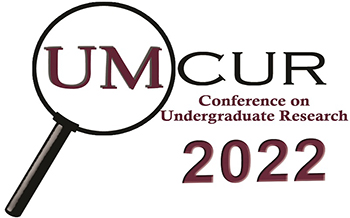Project Type
Presentation
Faculty Mentor’s Full Name
Brittany Palmer
Faculty Mentor’s Department
Environmental Studies
Abstract / Artist's Statement
In the United States and Canada, Native women, girls, and two-spirit people are stolen and killed at a disproportionate rate. Despite their pleas for justice, non-indigenous media are reluctant to give Indigenous voices a platform to incite change. Critically, the crisis of Missing and Murdered Indigenous Women, Girls, and Two-Spirit People (MMIWG2S) is not endemic to North America, but permeates through aboriginal life on every continent as a tool of settler colonialism. Existing literature on the topic ofMMIWG2S has traced the roots of the crisis to settler colonialism and to non-Indigenous popular culture, but there is a gap in knowledge about how these two phenomena reinforce one another. After all, colonialism is an ongoing process. Our research question addresses this gap by asking: how does settler colonialism inform the portrayal of Indigenous women in popular culture today and perpetuate the disproportionate rates of violence that contribute to the MMIWG2S epidemic?
We find that popular culture intentionally fetishizes and misrepresents Indigenous women and girls, through the folklorized narrative of Pocahontas, for example, so as to reinforce ideologies of conquest and colonization that are embedded in the American ethos. While American media is consumed on a global scale, colonized media representations of Indigenous people are not specific to the American experience, and are present in settler colonial states across the globe including Canada and Australia. Taught to children at a young age, these sexualized, gendered, and racialized narratives contribute to settler attempts at erasure of Native people across the globe.To rectify this, our capstone group devised a two-part project. First, we collaborated with the Big Sky Institute to organize and promote the Native Filmmaker Initiative feature of their documentary film festival and host a panel discussion after the showing. Additionally, we sold raffle tickets and donated proceeds to Missoula Project Beacon and an MMIP direct services organization. Second, using perspective and knowledge gained from organizing the panel discussion and speaking with Indigenous filmmakers, educators, and activists, we created and shared a media literacy toolkit designed to help high school educators encourage critical thinking about misrepresentations of Indigenous life in popular culture. It is our hope that this toolkit will transcend the boundaries of the Missoula community and uplift Indigenous voices on a global scale.
Category
Franke Global Leadership Initiative
Indigenous (Mis)Representation: Implications for the MMIWG2S Epidemic
UC 220
In the United States and Canada, Native women, girls, and two-spirit people are stolen and killed at a disproportionate rate. Despite their pleas for justice, non-indigenous media are reluctant to give Indigenous voices a platform to incite change. Critically, the crisis of Missing and Murdered Indigenous Women, Girls, and Two-Spirit People (MMIWG2S) is not endemic to North America, but permeates through aboriginal life on every continent as a tool of settler colonialism. Existing literature on the topic ofMMIWG2S has traced the roots of the crisis to settler colonialism and to non-Indigenous popular culture, but there is a gap in knowledge about how these two phenomena reinforce one another. After all, colonialism is an ongoing process. Our research question addresses this gap by asking: how does settler colonialism inform the portrayal of Indigenous women in popular culture today and perpetuate the disproportionate rates of violence that contribute to the MMIWG2S epidemic?
We find that popular culture intentionally fetishizes and misrepresents Indigenous women and girls, through the folklorized narrative of Pocahontas, for example, so as to reinforce ideologies of conquest and colonization that are embedded in the American ethos. While American media is consumed on a global scale, colonized media representations of Indigenous people are not specific to the American experience, and are present in settler colonial states across the globe including Canada and Australia. Taught to children at a young age, these sexualized, gendered, and racialized narratives contribute to settler attempts at erasure of Native people across the globe.To rectify this, our capstone group devised a two-part project. First, we collaborated with the Big Sky Institute to organize and promote the Native Filmmaker Initiative feature of their documentary film festival and host a panel discussion after the showing. Additionally, we sold raffle tickets and donated proceeds to Missoula Project Beacon and an MMIP direct services organization. Second, using perspective and knowledge gained from organizing the panel discussion and speaking with Indigenous filmmakers, educators, and activists, we created and shared a media literacy toolkit designed to help high school educators encourage critical thinking about misrepresentations of Indigenous life in popular culture. It is our hope that this toolkit will transcend the boundaries of the Missoula community and uplift Indigenous voices on a global scale.
